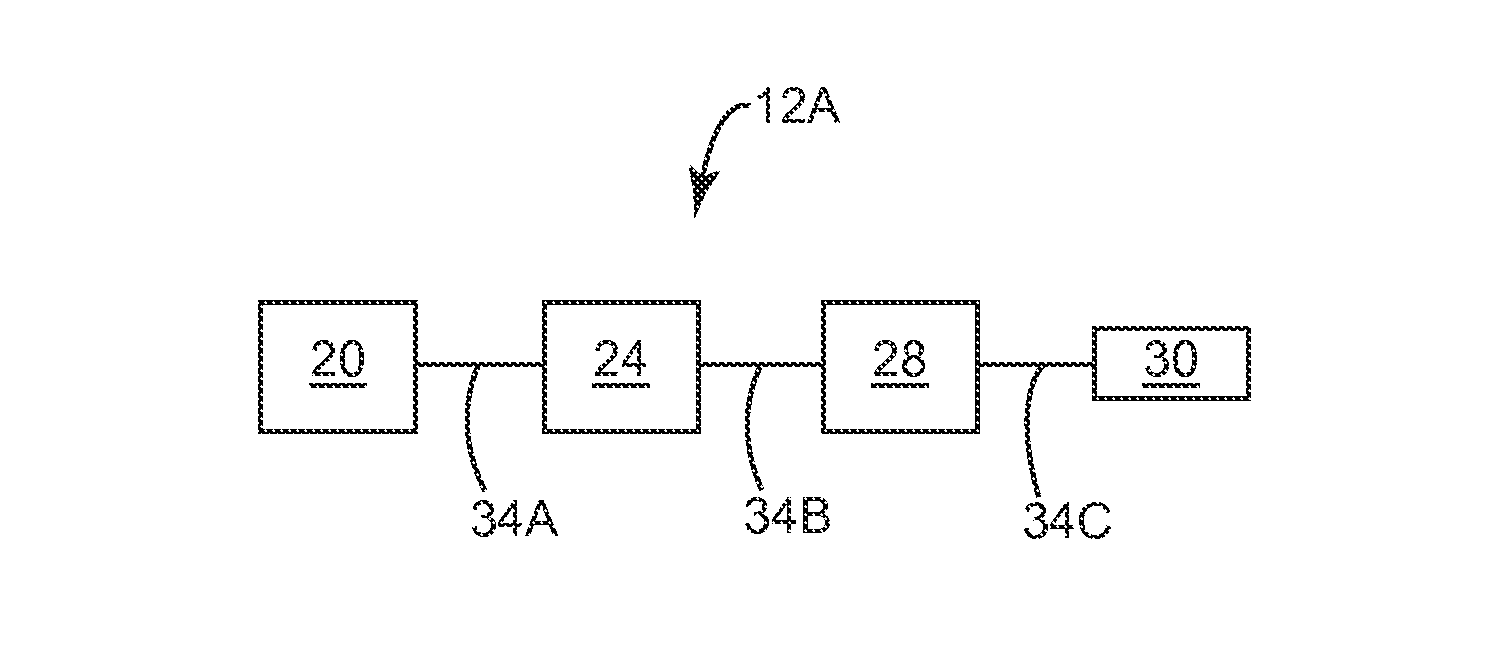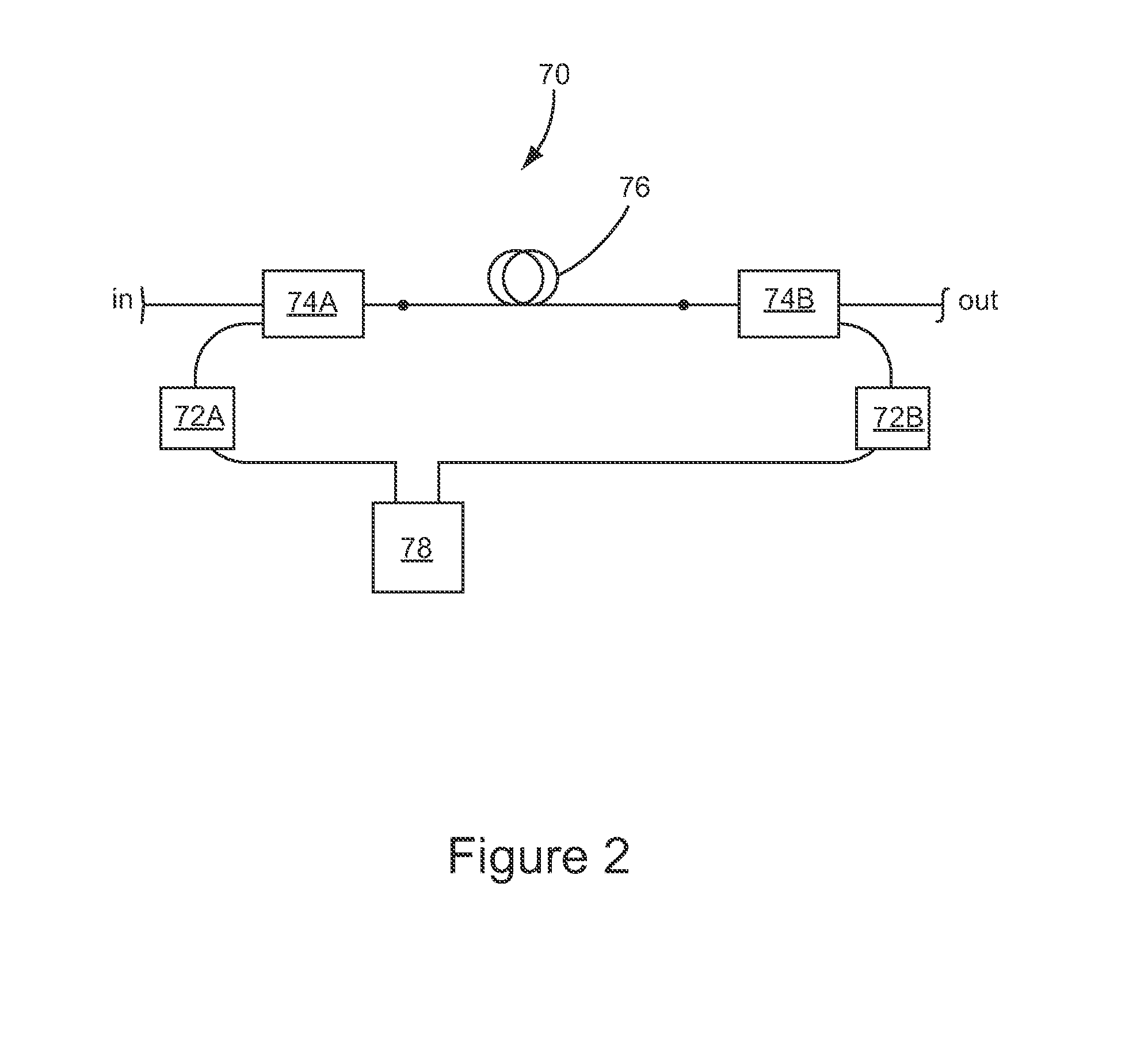Methods and apparatus pertaining to picosecond pulsed fiber based lasers
a fiber based laser and pulse technology, applied in the field of pulsed lasers, can solve the problems of haz and damage, fs pulses, and considerably more difficult production, and achieve the effects of low compression ratio, low spectral dispersion, and high spectral dispersion for compression
- Summary
- Abstract
- Description
- Claims
- Application Information
AI Technical Summary
Benefits of technology
Problems solved by technology
Method used
Image
Examples
Embodiment Construction
[0072]FIGS. 1A-D schematically illustrate embodiments according to the present disclosure of a pulsed fiber laser apparatus 12A-D for outputting picosecond (“ps”) laser pulses. A pulsed fiber laser apparatus 12A can comprise a pulsed seed laser 20, at least one optical fiber amplifier 24 in optical communication with the pulsed seed laser 20, a pulse compressor apparatus 28 in optical communication with the at least one optical fiber amplifier 24, and an optical output 30 in optical communication with the pulse compressor apparatus 28. Optical path 34A provides optical communication between the pulsed seed laser 20 and the least one optical fiber amplifier 24, which communicates with the pulse compressor apparatus 28 via optical path 34B. Optical path 34C provides optical communication between the pulse compressor apparatus 28 and the optical output 30. The at least one optical fiber amplifier 24 is considered optically “downstream” of the pulsed seed laser 20, the pulse compressor ...
PUM
| Property | Measurement | Unit |
|---|---|---|
| time duration | aaaaa | aaaaa |
| mode field diameter | aaaaa | aaaaa |
| mode field diameter | aaaaa | aaaaa |
Abstract
Description
Claims
Application Information
 Login to View More
Login to View More - R&D
- Intellectual Property
- Life Sciences
- Materials
- Tech Scout
- Unparalleled Data Quality
- Higher Quality Content
- 60% Fewer Hallucinations
Browse by: Latest US Patents, China's latest patents, Technical Efficacy Thesaurus, Application Domain, Technology Topic, Popular Technical Reports.
© 2025 PatSnap. All rights reserved.Legal|Privacy policy|Modern Slavery Act Transparency Statement|Sitemap|About US| Contact US: help@patsnap.com



